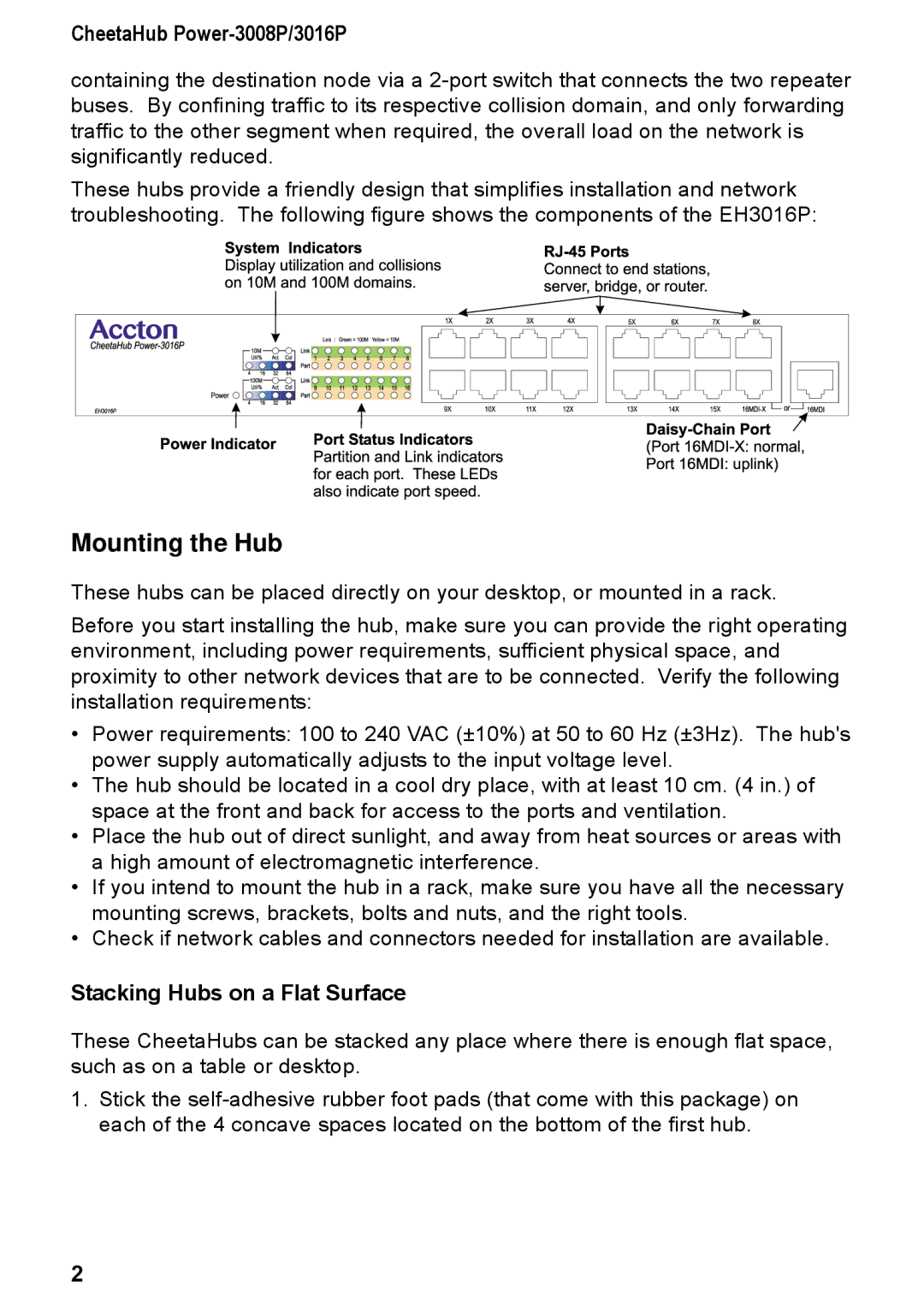
CheetaHub Power-3008P/3016P
containing the destination node via a
These hubs provide a friendly design that simplifies installation and network troubleshooting. The following figure shows the components of the EH3016P:
Mounting the Hub
These hubs can be placed directly on your desktop, or mounted in a rack.
Before you start installing the hub, make sure you can provide the right operating environment, including power requirements, sufficient physical space, and proximity to other network devices that are to be connected. Verify the following installation requirements:
•Power requirements: 100 to 240 VAC (±10%) at 50 to 60 Hz (±3Hz). The hub's power supply automatically adjusts to the input voltage level.
•The hub should be located in a cool dry place, with at least 10 cm. (4 in.) of space at the front and back for access to the ports and ventilation.
•Place the hub out of direct sunlight, and away from heat sources or areas with a high amount of electromagnetic interference.
•If you intend to mount the hub in a rack, make sure you have all the necessary mounting screws, brackets, bolts and nuts, and the right tools.
•Check if network cables and connectors needed for installation are available.
Stacking Hubs on a Flat Surface
These CheetaHubs can be stacked any place where there is enough flat space, such as on a table or desktop.
1.Stick the
2
